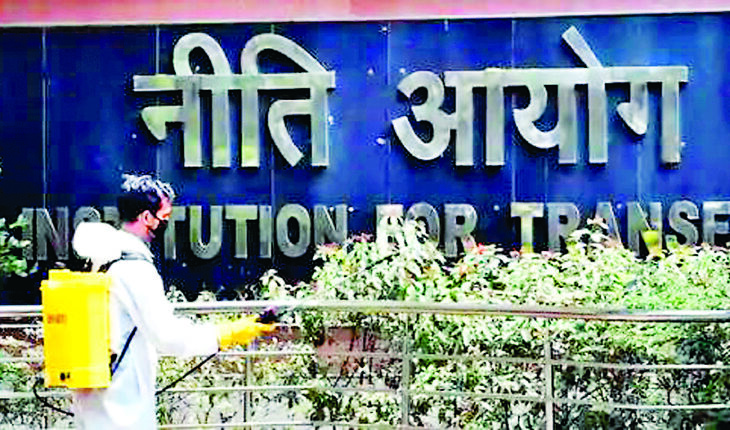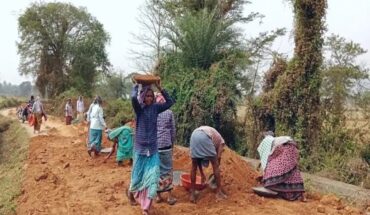Vikram Soni highlights there are only two unpolluted fresh water sources left in the country
While we are still in the grip of the COVID-19 pandemic, which is airborne, we have forgotten that another such blight could well come from contaminated water. NITI Ayog and WaterAid, amongst others, have found that over 70% of India’s surface and groundwater is contaminated by human and other waste and is likely to carry viruses. Indiscriminate human activity is often the reason for environmental degradation and pandemics. The practice of keeping animals locked together for mass production of meat produces an artificial environment that can birth mutations in erstwhile dormant viruses. Earlier, in the wild, animals were far away from human habitats. The viruses they harboured remained isolated. But today’s practices can spawn viruses that can easily transfer to the human population.
Once the virus has found its way into the human population, it is bound to proliferate in wastewater. For example, in England, Wales and Scotland, several wastewater samples were tested and were found to carry traces of SARS-CoV-2. Remnants of the virus have also been detected in raw sewage across Sydney. Research at the University of Stirling in Scotland indicates that the SARS-CoV-2 virus can spread through sewage water.
But such water is often discharged into water bodies in India. This is an alarming prospect for us as river water or lake water, which carries human waste, sewage, and toxic waste, can be a very generous host for viruses of different kinds and we do not know where and how they can mutate and strike. Some water-transmitted viral pathogens are astrovirus, hepatitis A and norovirus. Unlike in the developed world, a huge section of the population in India uses polluted water from sources like rivers, lakes, or groundwater for drinking.
Are we prepared for this? Certainly not. Can we be prepared? Very unlikely, even if we understood the viruses, and we are not there yet. Can we decontaminate our water bodies and groundwater? This could take several decades. The Rhine river in Germany, after 50 years of cleaning and stopping the inflow of pollutants and human waste, is still not fit for drinking. But despite the poor quality of water in India, the government has announced a `3 lakh crore ‘Nal se Jal’ scheme to provide drinking water connections to every rural household by 2024. Since most of the water sources are contaminated, the only way to purify water is through reverse osmosis (RO). But though RO removes contaminants, it also takes out all the healthy minerals and nutrients required by the human body. This is an unhealthy and exorbitantly priced proposition. To neutralise the virus, we would need at least an ultraviolet aquaguard treatment. While this won’t take out chemical contaminants, it is also costly.
So, what is the solution? The simple answer is that there is no technological substitute for living natural resources like pristine natural water and soil. This means that we must conserve and use our natural living resources. The water beneath our forests is as good as natural spring water. We must safeguard it for our own lives and for future generations. We have destroyed our natural living resources in our rush for development. Our development model is always focused on artificial infrastrusture, building highways, industrial plants, high-rise structures. In doing this, we kill our natural resources. As a result, we are running out of natural infrastructure at an alarming pace. Let’s not forget that developed countries have stable landscapes and populations whereas India has a growing population, which means there will be growing consumption. There are two unpolluted fresh water sources left in the country. The first is the water lying below our forests; the second is the aquifers that lie below the floodplains of rivers. Both these sources provide natural underground storage and are renewable – the rains provide natural recharge year after year and it is this recharge which can be used to water our cities and towns. There is one sacred conservation condition: we should use only a fraction of the annual recharge.
The aquifers underlying forests can provide healthy mineral water purely for drinking purposes. Since a person drinks only 2-3 litres of water a day, the mineral water requirement is modest. Such a scheme can provide quality natural mineral water, comparable to Himalyan mineral water at `2 a litre, 20 times less than the market price. The river floodplains are a great source of water for cities. The Yamuna floodplains in Delhi already use such a scheme to provide water to a million people each year. Forests and floodplains must be declared as water sanctuaries. Such schemes work with nature rather than against it. They can be used around the globe. It is important to remember that these evolutionary resources, once lost, will be lost forever. It is time we understood this is natural infrastructure bequeathed to us by nature. If we don’t realise this, it will only be our loss.
Once the virus has found its way into the human population, it is bound to proliferate in wastewater. For example, in England, Wales and Scotland, several wastewater samples were tested and were found to carry traces of SARS-CoV-2. Remnants of the virus have also been detected in raw sewage across Sydney. Research at the University of Stirling in Scotland indicates that the SARS-CoV-2 virus can spread through sewage water.
But such water is often discharged into water bodies in India. This is an alarming prospect for us as river water or lake water, which carries human waste, sewage, and toxic waste, can be a very generous host for viruses of different kinds and we do not know where and how they can mutate and strike. Some water-transmitted viral pathogens are astrovirus, hepatitis A and norovirus. Unlike in the developed world, a huge section of the population in India uses polluted water from sources like rivers, lakes, or groundwater for drinking.
Are we prepared for this? Certainly not. Can we be prepared? Very unlikely, even if we understood the viruses, and we are not there yet. Can we decontaminate our water bodies and groundwater? This could take several decades. The Rhine river in Germany, after 50 years of cleaning and stopping the inflow of pollutants and human waste, is still not fit for drinking. But despite the poor quality of water in India, the government has announced a `3 lakh crore ‘Nal se Jal’ scheme to provide drinking water connections to every rural household by 2024. Since most of the water sources are contaminated, the only way to purify water is through reverse osmosis (RO). But though RO removes contaminants, it also takes out all the healthy minerals and nutrients required by the human body. This is an unhealthy and exorbitantly priced proposition. To neutralise the virus, we would need at least an ultraviolet aquaguard treatment. While this won’t take out chemical contaminants, it is also costly.
So, what is the solution? The simple answer is that there is no technological substitute for living natural resources like pristine natural water and soil. This means that we must conserve and use our natural living resources. The water beneath our forests is as good as natural spring water. We must safeguard it for our own lives and for future generations. We have destroyed our natural living resources in our rush for development. Our development model is always focused on artificial infrastrusture, building highways, industrial plants, high-rise structures. In doing this, we kill our natural resources. As a result, we are running out of natural infrastructure at an alarming pace. Let’s not forget that developed countries have stable landscapes and populations whereas India has a growing population, which means there will be growing consumption. There are two unpolluted fresh water sources left in the country. The first is the water lying below our forests; the second is the aquifers that lie below the floodplains of rivers. Both these sources provide natural underground storage and are renewable – the rains provide natural recharge year after year and it is this recharge which can be used to water our cities and towns. There is one sacred conservation condition: we should use only a fraction of the annual recharge.
The aquifers underlying forests can provide healthy mineral water purely for drinking purposes. Since a person drinks only 2-3 litres of water a day, the mineral water requirement is modest. Such a scheme can provide quality natural mineral water, comparable to Himalyan mineral water at `2 a litre, 20 times less than the market price. The river floodplains are a great source of water for cities. The Yamuna floodplains in Delhi already use such a scheme to provide water to a million people each year. Forests and floodplains must be declared as water sanctuaries. Such schemes work with nature rather than against it. They can be used around the globe. It is important to remember that these evolutionary resources, once lost, will be lost forever. It is time we understood this is natural infrastructure bequeathed to us by nature. If we don’t realise this, it will only be our loss.
Vikram Soni is Emeritus Professor at Jamia Millia and Jawaharlal Nehru University. Views are personal.






